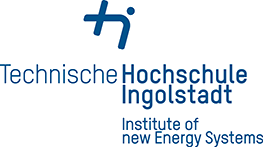Warning: md5() expects parameter 1 to be string, array given in /html/wordpress_HAW Kenia/wp-content/plugins/fusion-builder/shortcodes/fusion-image.php on line 648
Warning: strlen() expects parameter 1 to be string, array given in /html/wordpress_HAW Kenia/wp-content/plugins/fusion-builder/inc/class-fusion-builder.php on line 1942
Lessons Learnt from the UAS Workshops
Practical Teaching and Learning for Knowledge Transfer
The German model of UAS Exposes learners to practical experience and problem based learning where they deal with real Industry challenges and develop solutions for the same. Students who go through this model are able to seamlessly fit into the industry upon graduation. This model should the way to go for Kenyan University so as to enhance technology transfer and achieve the Countries vision of becoming industrialized by the year 2030.
Curriculum Development to Support Practical Teaching and Learning
Content of Curricular at UAS is guided by competencies and market needs. The Faculty ensures that the programs are not too specialized as to limit the employ-ability of the graduates. Each course is made as unique as possible to ensure there is no cannibalization of existing courses.
The development process begins with a consultative meeting by all stakeholders. The course must be attractive to students, competitive and driven by market needs as defined by the economic activities with the Universities sphere of operation. The Curriculum process also involves an evaluation of resource requirements (both human and facilities) to effectively deliver the course. Before implementation a curriculum is subjected to a reality check by both the Faculty and Industry stakeholders.
Quality Control a Critical Success Factor of the UAS Model
Quality control is a key feature of the UAS Model content delivery thoroughly prepares student for technology transfer. Quality is controlled in various ways which include the following: competence of the Faculty; a majority of the Faculty have Industry experience. Specifically, a Professor in UAS must have industry experience of at least five year this enhances delivery of content and knowledge transfer. In addition the Faculty Dean Mentors part -time lecturer to ensure teaching standard and extermination standards are observed. Thorough orientation and induction of new Lecturers is done at the Didactics Center where new Faculty is taken the through the UAS model
Compulsory Internship Prepares Students for the World of Work
At UAS, all students attend a five to six months compulsory internship to gain practical experience from the Industry. To enhance the impact of the internship an introduction practical pre- internship seminar is carried out to brief the student on the requirements and expectations of the internship. No supervision is done by the Faculty while at the internship but the industry supervisor writes a recommendation for the student. Students do a post internship oral presentation to a pannel comprising of both the industry supervisors and the Faculty. Students are awarded marks from this presentation.
Applied Research forms the Bases for Problem - Based Learning at UAS
Professors at UAS make deliberate individual efforts to establish and maintain collaborations with Industry Partners in which case the University become like a Research and Development Center for the Industries in the region. Industries support Universities to carry out research on real problems. The solutions developed from this research are in most cases adopted by the Industries. The Faculty engages the students in carrying out this research. In addition, the Universities of Applied Science and the Industry carry out joint funded research projects where students are involved and are able to write their final year Projects and Thesis based on these research projects.
Enhancing Technology Transfer for Economic Development
The UAS model prioritizes Technology Transfer as a key driver to economic growth. The Universities support start-up companies through research and training at the Technology Transfer Centers Established with the support of the government. A close collaboration between the University and the Industry sees the Industry support the transfer Center with equipment for training and research. Company employees attend training at the education section of the Center to enhance their knowledge and skills.

Leave A Comment